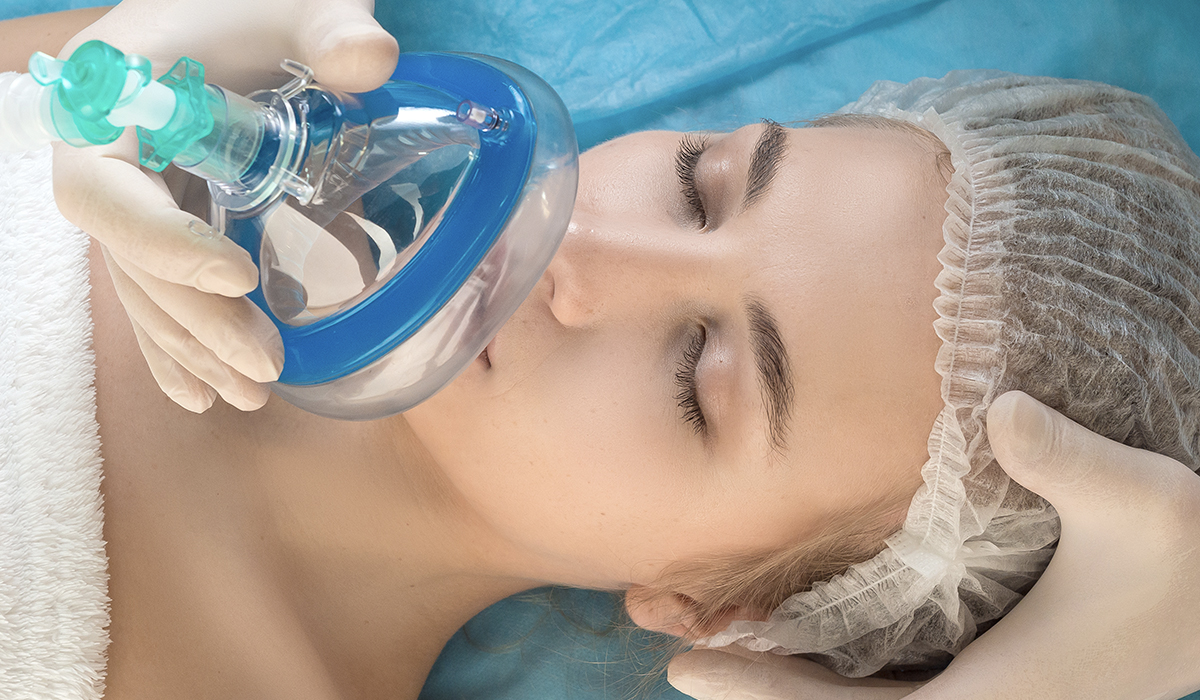Anesthesia is a controlled state of unconsciousness, paralysis, and/or analgesia induced by gaseous or injectable pharmaceuticals by trained professionals for medical purposes.
Most plastic surgery and cosmetic procedures utilize one type of anesthesia to ensure patients don’t feel any discomfort during surgery, though up to three can be administered: sedation and local or general anesthesia.
As technology has advanced, the anesthesia necessary for certain procedures has evolved, facilitating safer application and shorter recovery times. For instance, some procedures that previously required general anesthesia are currently conducted with the use of local anesthesia and a light sedation combination. This has cut down the cost of hospital stays, anesthesiologists, and post-surgery downtime.
Administered as a gas or intravenously (IV), general anesthesia is typically used for extensive procedures longer than five hours.
Administered as a gas or intravenously (IV), general anesthesia is typically used for extensive procedures longer than five hours. During general, the patient will experience unconsciousness, immobility, loss of reflexes, and insensitivity to pain. They will also require the help of a breathing tube down the windpipe, and constant monitoring by an anesthesiologist in addition to the plastic surgeon and his staff.
Commonly, full tummy tucks (abdominoplasties), full body lifts, and so-called “mommy makeovers” are performed under general anesthesia because they exceed the five-hour maximum. When surgeries are combined—such as an abdominal, buttock, and thigh lift for a full body lift; or the sequence of a tummy tuck, breast lift, and liposuction for a mommy makeover—the length of surgery increases, therefore escalating the need to use general anesthesia.
Dr. Anthony Buglino has performed a wide range of plastic and cosmetic surgeries utilizing all three types: general, local anesthesia, and IV sedation.
Local anesthesia, a numbing medication, can be administered as an injection, topical solution, or spray to a specific area of the body. When receiving this, patients remain aware, experience analgesia where applied, and have shorter recovery times. Sedation, sometimes referred to as twilight anesthesia, may be added. Sedation, when administered intravenously, can be classified as: minimal, moderate, and deep. During the latter state, a patient feels sleepy, but can follow simple directions. Similar to general anesthesia, patients may not recall the surgery or the time immediately afterward.
Dr. Buglino has combined local anesthesia and light PO (by mouth) sedation to perform more than 700 awake liposuction procedures, reducing the risk of blood clots and trauma.
This results in quicker recovery and less soreness. Generally, for three days afterward, patients feel as though they’ve done more than 1,000 sit-ups. By day four, they’re not 100-percent healed, but can resume normal daily activities. Patients must wait approximately four weeks to do any strenuous activity. Most patients are encouraged to walk right away and may return to moderate cardio in one week.
This method of sedation enables Dr. Buglino to reach otherwise very difficult areas, with patients twisting and turning to suction out fat from every angle.
Conducting this procedure under sedation and local anesthesia is no easy feat, and requires extensive training and experience. Surgeons administer tumescence (numbing fluid) through tiny 16 gauge cannulas, slowly throughout the abdomen until completely numb (usually about 30 minutes later). The patient is then able to feel touch on the outside, while numbness persists inside. The surgeon administers PO sedation prior to control discomfort during the tumescent process.
Throughout the process, Dr. Buglino ensures his patients feel safe and comfortable. To keep patients calm, Dr. Buglino employs music therapy, allowing patients to choose songs to listen to during surgery.
Mini Face lifts, nasal tip surgery, lip lifts, eyelid lifts, chin and cheek augmentations can be performed under local anesthesia alone. Dr. Buglino may prescribe a sedative in pill form prior, then use a Novocaine-like injection at the site during surgery. Local anesthesia with epinephrine decreases bleeding during surgery, lessens bruising after, and is more cost-effective than general anesthesia.
Prior to conducting any procedure, Dr. Buglino will discuss which anesthesia method is best for each patient. Every patient and surgery is unique, so the type of anesthesia that will need to be administered may vary.




